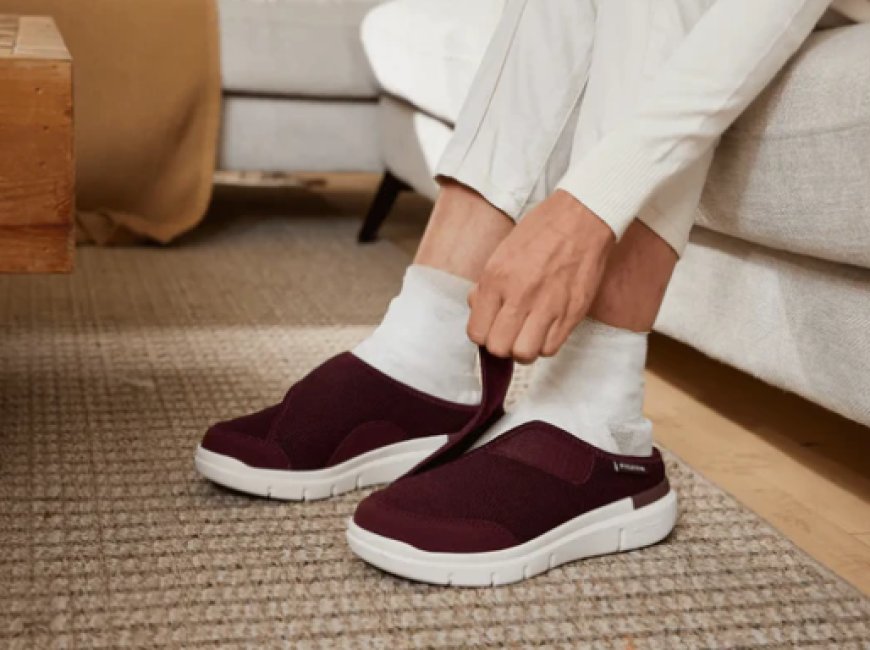Best Wide Diabetic Shoes for Swollen Feet: Comfort, Support & Protection

Living with diabetes can bring many challengesone of the most common being swollen feet. This condition, known as edema, is caused by poor circulation or nerve damage and can make finding comfortable footwear a daily struggle. Thats where wide diabetic shoes for swollen feetcome in: theyre specifically designed to offer comfort, support, and protection for people managing both diabetes and swollen feet.
In this blog post, well explain why wide shoes are essential for diabetic foot health, what features to look for, and our top recommendations to keep your feet happy and healthy.
Why Diabetic Feet Need Special Shoes
Diabetes often causes neuropathy (nerve damage) and poor circulation, which can lead to:
-
Swelling (especially in the ankles and feet)
-
Numbness or tingling
-
Increased risk of blisters, ulcers, and infections
-
Slower healing
Wearing tight or poorly fitted shoes can worsen these issues and may even result in serious complications. Thats why properly fitted, extra-wide diabetic shoes are crucialthey provide the space, support, and breathability your feet need.
What to Look for in Wide Diabetic Shoes
When shopping for diabetic shoes for swollen feet, look for these essential features:
1. Extra Width Options
Look for widths like 2E (wide), 4E (extra wide), or even 6E (XX-wide) to accommodate swelling and prevent constriction.
2. Adjustable Closures
Velcro straps, stretch laces, or hook-and-loop designs allow you to loosen or tighten the fit throughout the day as swelling fluctuates.
3. Seam-Free Interiors
Seams can rub against the skin and cause blisters or soresespecially problematic for people with reduced sensation. Seamless interiors help reduce friction and protect the skin.
4. Breathable and Soft Materials
Knit uppers, mesh panels, and soft linings improve airflow and prevent overheating or excess moisture.
5. Cushioned Insoles with Arch Support
Well-cushioned, supportive insoles reduce pressure points and support natural alignment, which helps relieve foot fatigue and pain.
6. Non-Slip Soles
Diabetes-related nerve damage can affect balance. Grippy, rubber outsoles improve traction and prevent slips and falls.
Top Wide Diabetic Shoes for Swollen Feet
Here are some standout options that meet all the key criteria:
1. FitVille Men's EasyTop StrapEase Diabetic Shoes V4
-
Width: Up to 6E
-
Best for: Men with severe swelling or high insteps
-
Features: Adjustable Velcro straps, U-shaped heel cup for stability, mesh + PU upper, cushioning EVA footbed
-
Why we love it: Provides friction-free comfort with a silky lining and a solid, slip-resistant outsole for security.
2. FitVille Women's EasyTop Recovery Sandal V3
-
Width: Wide (2E)
-
Best for: Summer wear or indoor use
-
Features: Adjustable Velcro straps, roomy toe box for bunions and swelling, arch support, lightweight EVA sole
-
Why we love it: Its breathable, lightweight, and ideal for post-workout or everyday wear when your feet are most sensitive.
3. Orthofeet Diabetic Shoes (Men & Women)
-
Width: Standard to 4E
-
Best for: Those needing orthopedic support and cushioning
-
Features: Stretchable uppers, ergonomic orthotic insoles, seam-free interiors
-
Why we love it: Trusted by podiatrists, they provide excellent relief for neuropathy, swelling, and plantar fasciitis.
4. Propet Cush'N Foot Slipper
-
Width: Up to 5E
-
Best for: Indoors or post-surgery recovery
-
Features: Large opening, adjustable hook-and-loop strap, soft terry lining
-
Why we love it: Ideal for severe swelling or foot bandages, these slippers combine medical-grade comfort with convenience.
Tips for Managing Swollen Feet with Diabetes
In addition to wearing the right shoes, here are a few tips to keep swelling under control:
-
Elevate your feet whenever possible
-
Avoid standing or sitting for long periods
-
Stay hydrated to reduce water retention
-
Wear compression socks (if recommended by your doctor)
-
Inspect your feet daily for signs of irritation, blisters, or injury
-
Keep blood sugar under control to reduce inflammation and circulation issues
Final Thoughts: Comfort is Health
If youre dealing with diabetes and swollen feet, investing in a pair of wide diabetic shoes isnt just about comfortits about protecting your health. The right shoes help prevent complications, relieve pain, and keep you moving with confidence.
Whether you prefer a sneaker, sandal, or slipper style, there are now more attractive and functional diabetic footwear options than ever before. Dont settle for shoes that pinch, rub, or restrictgive your feet the space and support they need to stay healthy for the long haul.
Shop Smart, Step Safely
Need help picking the right pair? Reach out to a foot care specialist or podiatrist for personalized recommendations. And when in doubt, always choose shoes that prioritize fit, flexibility, and foot health.





















![Top 11 Real Estate Mobile App Developers in Riyadh, Saudi Arabia [2025 Edition]](https://www.philadelphialivenews.com/uploads/images/202506/image_430x256_68621a9e48997.jpg)






















![Top 11 Real Estate Mobile App Developers in Riyadh, Saudi Arabia [2025 Edition]](https://www.philadelphialivenews.com/uploads/images/202506/image_140x98_68621a9e4a204.jpg)